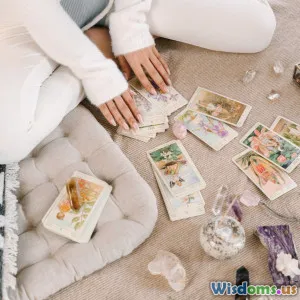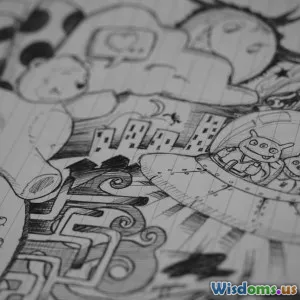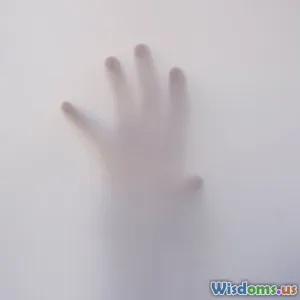
Crystal Healing: Myths and Facts
7 min read Explore crystal healing with facts and myths debunked, revealing its historical roots and scientific scrutiny. (0 Reviews)
Crystal Healing: Myths and Facts
Introduction
Since ancient times, humans have been drawn to the mesmerizing allure of crystals. Sparkling stones have inspired myths, rituals, and beliefs about their powers to heal and transform energy. Today, crystal healing enjoys a resurgence within alternative medicine and spiritual communities, promising benefits ranging from emotional balance to physical wellness.
But behind the colorful allure and anecdotal testimonies lurk questions: Are these claims rooted in fact, or are they myths propagated by imagination and commercial appeal? This article dives deep into the mysteries and realities of crystal healing, separating evidence-based findings from popular legend.
The Historical and Cultural Context of Crystal Healing
Crystals have been used for healing purposes for thousands of years across multiple cultures:
- Ancient Egypt: The Egyptians placed lapis lazuli, turquoise, and clear quartz in amulets to guard against disease and malevolence. Queen Cleopatra famously favored emeralds for rejuvenation.
- Traditional Chinese Medicine: Jade has held a special place as a stone believed to enhance healing and harmony.
- India and Ayurvedic Practices: Crystals like ruby and sapphire are linked to chakra balancing and energetic alignment.
These cultural usages were not just ornamental; they were entwined with spiritual beliefs and understanding of the body’s energetic systems. This historical embedding helps explain why crystals continue to hold significant emotional and symbolic power today.
Myths Surrounding Crystal Healing
Myth 1: Crystals Emit Magical Healing Energies
Popular New Age circles often promote that crystals possess intrinsic electromagnetic energies capable of healing and manifesting intentions. However, scientific scrutiny offers no measurable proof that any crystal's energy can directly influence human biology or health conditions beyond a placebo effect.
Myth 2: All Crystals Work the Same Way for Everyone
The belief that certain crystals always have predetermined effects on specific conditions is overly simplistic. Healing experiences with crystals are highly subjective and can vary based on individual psychology, belief systems, and context.
Myth 3: Crystal Healing Can Replace Medical Treatment
Some advocates suggest crystals can cure diseases or serious medical conditions independently. This claim is both unscientific and potentially dangerous. Medical professionals emphasize that crystals should never substitute conventional treatments.
What Science Says About Crystal Healing
Placebo and Psychological Impact
Research in alternative medicine has acknowledged psychological and placebo mechanisms that might explain why some people feel better after crystal healing sessions. The mind’s power to induce relaxation, reduce stress, or change perceptions of pain is well documented.
Lack of Empirical Evidence
To date, no rigorous clinical trials have conclusively demonstrated that crystals emit energy fields that influence cellular or neurological functions. For example, a 2017 study published in "Complementary Therapies in Medicine" reviewed popular effectiveness claims and found insufficient evidence supporting crystal healing beyond placebo.
The Role of Color and Shape
Some studies suggest that the colors and shapes of crystals might influence mood or emotions indirectly — colors like amethyst’s purple may evoke calmness psychologically, while the tactile experience can offer mindfulness benefits akin to meditation tools.
Real-World Insights and Practical Applications
Despite scientific skepticism, crystal healing has tangible benefits in wellness contexts:
- Stress Reduction: Many users find handling crystals and meditating with them to be calming, a valuable tool to combat anxiety.
- Symbolism and Intention Setting: Crystals can serve as physical reminders of personal goals or positive affirmations, enhancing self-reflection.
- Community and Ritual: Group practices incorporating crystals create a sense of connection and shared healing journeys.
Celebrities and wellness experts oftentimes endorse crystals for mental clarity and spiritual benefits, advocating their use as supplementary to holistic health practices.
How to Approach Crystal Healing Intelligently
Be Skeptical, Yet Open-minded
While scientific evidence for metaphysical properties is lacking, the subjective benefits of crystal healing warrant respect. Use crystals to complement, not replace, expert medical advice.
Focus on Personal Experience
Select crystals based on personal attraction rather than prescribed “magical” categories, emphasizing mindfulness and intention.
Educate Yourself About Crystals
Understanding the geological makeup and cultural origins enriches appreciation beyond mere superstition.
Conclusion
Crystal healing occupies a fascinating intersection of historical tradition, cultural symbolism, and contemporary spirituality. While it remains unsubstantiated by definitive scientific proof, its psychological and symbolic roles hold genuine therapeutic value for many.
Rather than dismissing crystals outright or embracing them uncritically, an informed approach recognizing both myths and meaningful facts lets individuals explore this ancient practice with curiosity and discernment. Whether viewed as metaphysical wonders or reflective tools, crystals continue enchanting humanity — reminding us of our enduring desire to heal, connect, and find sparkle in life’s mysteries.
“Healing is a matter of time, but it is sometimes also a matter of crystals.” – Unknown
Rate the Post
User Reviews
Popular Posts















